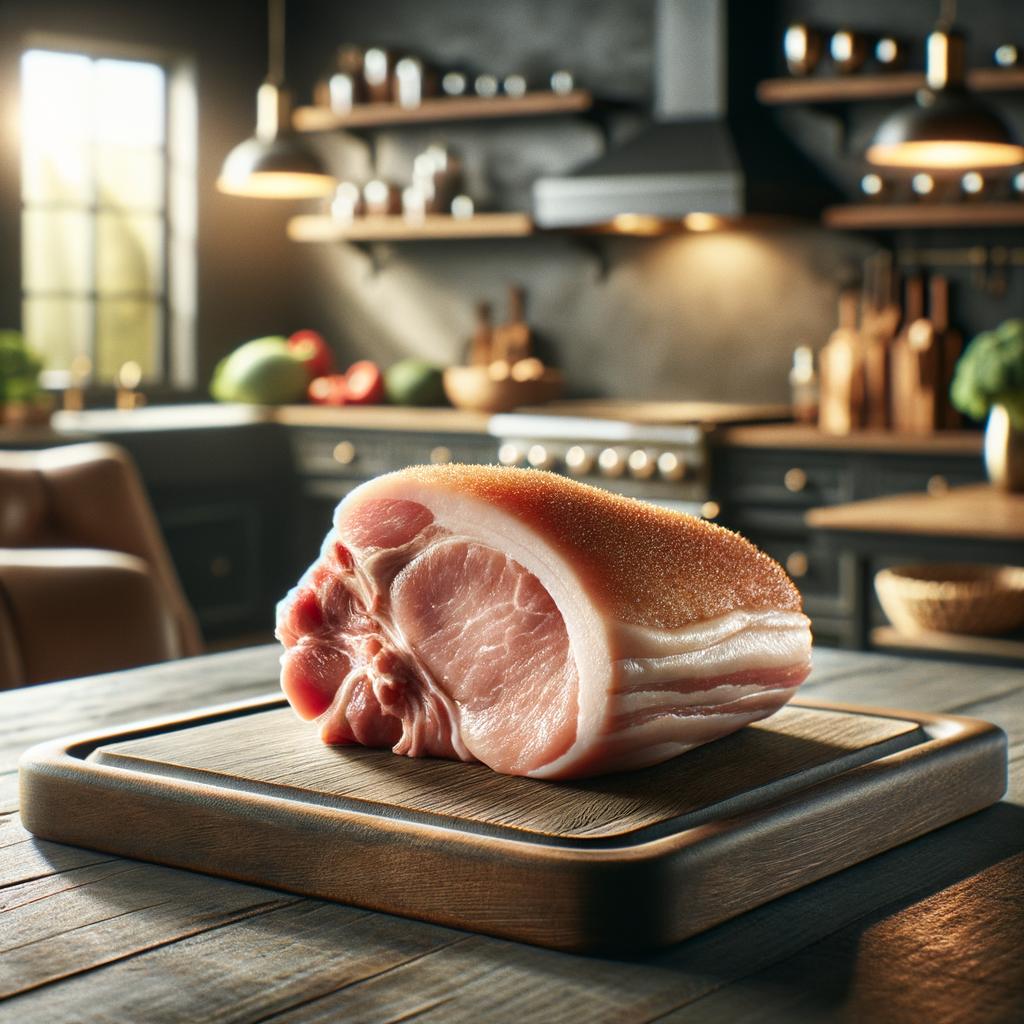Pork Neck

Description
Pork neck, also known as pork collar, is a lesser-known cut of meat that comes from the area near the pig's shoulder. It's a beautiful piece of meat, marbled with just the right amount of fat, giving it a rich, robust flavor. It has a tender and juicy texture that melts in your mouth when cooked properly. The flavor profile of pork neck is deeply savory, with a slightly sweet undertone that is distinct from other pork cuts. Its unique characteristic is the balance of lean meat and fat, which gives it an incredible flavor and succulence, setting it apart from other cuts like the pork loin or shoulder.
Primary Uses
Pork neck is a versatile ingredient that can be used in a variety of culinary applications. It's perfect for slow cooking methods like braising, stewing, or roasting, which allows the fat to melt and tenderize the meat, resulting in a succulent and flavorful dish. It's a key component in many cuisines around the world. In Korean cuisine, it's used in a popular dish called Jeyuk Bokkeum, a spicy stir-fried pork. In Italian cooking, it's often used to make Porchetta, a savory and moist boneless pork roast.
History
The history of pork neck is as rich and diverse as the cultures that utilize it. In the past, it was often a cut of meat that was overlooked, as people favored the more familiar cuts like loin or ham. However, in many cultures, especially those where nothing goes to waste, pork neck has always been cherished. In Italy, it's the star of the traditional Porchetta, a dish that dates back to the Roman times. In Korea, it's been used in traditional recipes for centuries. Over time, as chefs and home cooks alike began to appreciate the unique qualities of this cut, its popularity has grown.
Nutritional Information
Pork neck is a good source of protein, providing essential amino acids necessary for muscle growth and repair. It also contains a fair amount of fat, which contributes to its flavor and tenderness. This fat contains a mix of saturated and unsaturated fats, which should be consumed in moderation as part of a balanced diet. Compared to leaner cuts like pork loin, pork neck has a higher fat content, but it also tends to be more flavorful and tender. It also contains several vitamins and minerals, including B-vitamins, zinc, and selenium. While it is a nutrient-dense food, it's important to enjoy pork neck as part of a varied and balanced diet.

